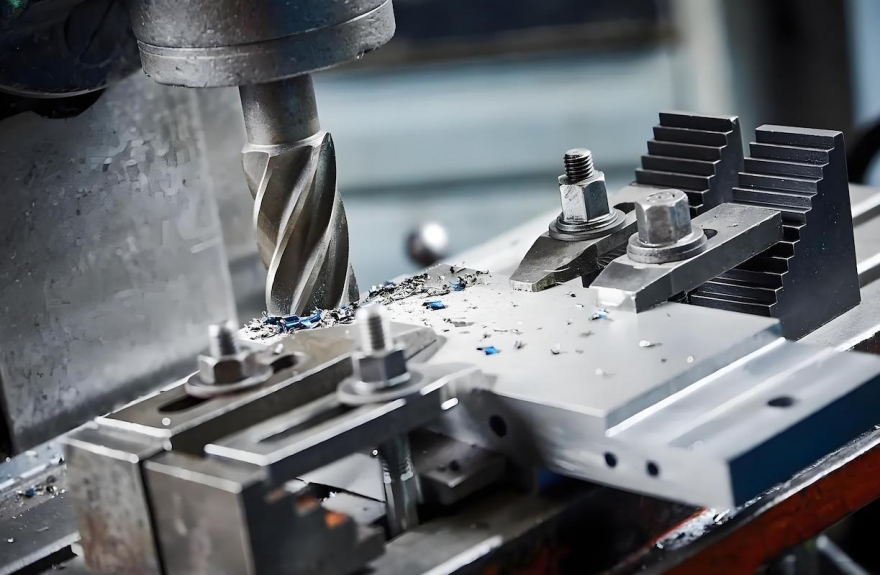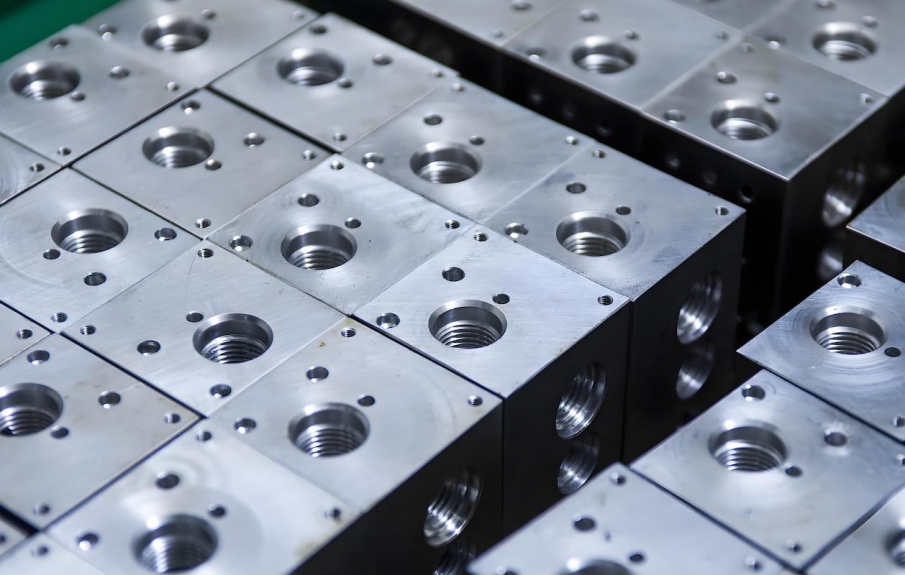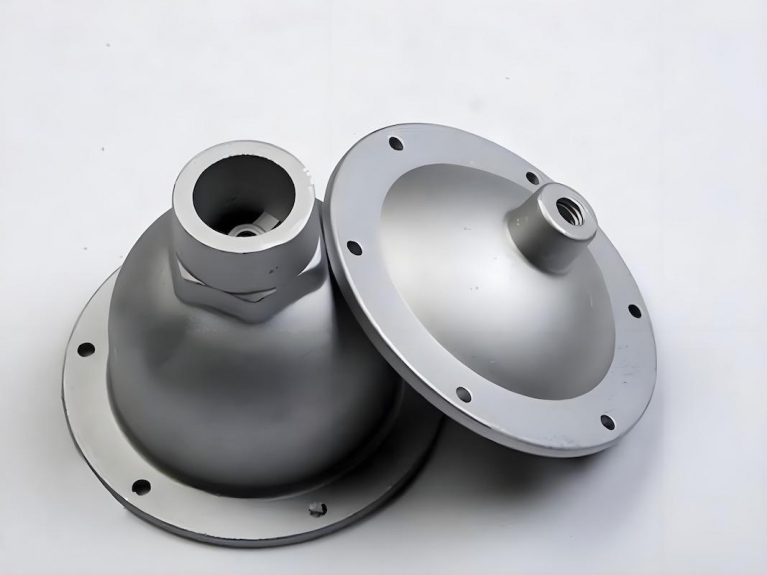Die casting is a manufacturing process that involves forcing molten metal into a mold cavity under high pressure. This technique is widely used for producing complex shapes and high-volume parts with excellent dimensional accuracy. However, the success of die casting heavily relies on effective quality control measures. This article explores the critical role of quality control in die casting, detailing its importance, practices, and the impact it has on the overall production process.
Understanding Die Casting
The Die Casting Process
Die casting involves several key steps, each of which is crucial for producing high-quality components. The process begins with mold preparation, where the mold, typically made from durable steel, is meticulously cleaned and heated to the required temperature. This preparation is essential to ensure that the molten metal flows smoothly into the mold and that the final product has the desired surface finish.
Next, the injection of molten metal occurs. This step is characterized by the rapid injection of molten metal into the mold cavity at high pressure, which allows for the creation of intricate designs and fine details. The pressure used during this phase is critical, as it affects the density and strength of the final product.
Following injection, the metal undergoes cooling and solidification. This phase is carefully controlled to ensure uniform cooling, which helps prevent defects such as warping or cracking. Once the metal has solidified, the ejection process begins, where the newly formed part is removed from the mold. This step must be executed with precision to avoid damaging the part.
Finally, the process concludes with trimming and finishing, where any excess material is removed, and the part may undergo additional processes such as machining or surface treatment to enhance its properties and appearance. Each of these steps is interconnected, and any failure in one can lead to defects in the final product.

Types of Die Casting
There are two primary types of die casting, each suited for different applications and materials. Hot chamber die casting is ideal for metals with low melting points, such as zinc and magnesium. In this method, the molten metal is kept in a chamber that is continuously heated, allowing for quick and efficient production cycles. This technique is particularly advantageous for high-volume production runs, as it minimizes the time between cycles.
On the other hand, cold chamber die casting is used for metals with higher melting points, such as aluminum and copper. In this method, the molten metal is poured into the chamber before being injected into the mold. This process requires more time and energy but is essential for producing parts that require the unique properties of these metals. Understanding the differences between these methods is crucial for selecting the appropriate die casting technique for specific applications.
The Importance of Quality Control in Die Casting
Quality control is essential in die casting for several reasons, each contributing to the overall success of the manufacturing process.
Ensuring Dimensional Accuracy
Dimensional accuracy is critical in die casting, as even minor deviations can lead to significant issues in assembly and functionality. Quality control measures ensure that each part meets the specified tolerances, reducing the risk of defects. This accuracy is particularly important in industries where components must fit together precisely, such as in automotive and aerospace applications. By implementing stringent quality control protocols, manufacturers can minimize the risk of costly rework and ensure that parts perform as intended.
Enhancing Product Reliability
Quality control helps in identifying and mitigating potential defects early in the production process. By ensuring that each component meets quality standards, manufacturers can enhance the reliability of the final product, which is crucial in industries such as automotive and aerospace. Reliable components not only improve customer satisfaction but also reduce warranty claims and enhance the manufacturer's reputation. This reliability is achieved through rigorous testing and inspection processes that verify the integrity of each part before it reaches the market.
Reducing Waste and Costs
Implementing effective quality control processes can significantly reduce waste by identifying defective parts before they are produced in large quantities. This not only saves material costs but also minimizes the need for rework and scrap, leading to overall cost savings. By focusing on quality from the outset, manufacturers can optimize their production processes, leading to more efficient use of resources and improved profitability. Additionally, reducing waste contributes to more sustainable manufacturing practices, which is increasingly important in today's environmentally conscious market.
Meeting Regulatory Standards
Many industries have strict regulatory standards that must be adhered to. Quality control ensures that die-cast components comply with these regulations, which is particularly important in sectors like medical devices and automotive manufacturing. Compliance with these standards not only protects consumers but also helps manufacturers avoid legal issues and potential recalls. By integrating quality control into the production process, companies can demonstrate their commitment to safety and quality, which can enhance their market position.

Key Quality Control Practices in Die Casting
Material Inspection
Before production begins, the raw materials used in die casting must be thoroughly inspected. This includes checking for impurities, verifying material specifications, and ensuring that the materials are suitable for the intended application. Material inspection is a critical first step in the quality control process, as the quality of the raw materials directly impacts the final product. By ensuring that only high-quality materials are used, manufacturers can reduce the likelihood of defects and improve the overall performance of the die-cast parts.
Process Monitoring
Continuous monitoring of the die casting process is vital. This includes tracking parameters such as temperature, pressure, and injection speed. By maintaining optimal conditions, manufacturers can reduce the likelihood of defects. Advanced monitoring systems can provide real-time data, allowing operators to make immediate adjustments if any parameters deviate from the established norms. This proactive approach to quality control helps ensure consistent production quality and minimizes the risk of costly errors.
In-Process Inspections
Regular inspections during the production process help identify issues as they arise. This can include visual inspections, dimensional checks, and non-destructive testing methods to detect internal defects. In-process inspections are essential for maintaining quality throughout the production cycle, as they allow for quick identification and correction of any problems. By implementing a robust inspection regime, manufacturers can ensure that only parts that meet quality standards proceed to the next stages of production.
Final Product Testing
Once the die-cast parts are produced, they undergo rigorous testing to ensure they meet quality standards. This may involve mechanical testing, surface finish evaluations, and functional testing to verify performance. Final product testing is the last line of defense in the quality control process, ensuring that only parts that meet all specifications are delivered to customers. This thorough testing not only helps identify any remaining defects but also provides valuable data that can be used to improve future production processes.
Advanced Quality Control Techniques
Statistical Process Control (SPC)
SPC is a method that uses statistical techniques to monitor and control the die casting process. By analyzing data collected during production, manufacturers can identify trends and variations, allowing for proactive adjustments to maintain quality. This data-driven approach enables manufacturers to make informed decisions based on empirical evidence rather than intuition, leading to more consistent quality outcomes. Implementing SPC can also help identify root causes of defects, facilitating continuous improvement efforts.
Six Sigma
Six Sigma is a data-driven approach aimed at reducing defects and improving quality. By applying Six Sigma methodologies, die casting manufacturers can systematically identify and eliminate sources of variation in their processes. This structured approach not only enhances product quality but also fosters a culture of continuous improvement within the organization. Training employees in Six Sigma principles can empower them to take ownership of quality control efforts, leading to a more engaged workforce and better overall results.
Automation and Technology
The integration of automation and advanced technologies, such as machine learning and artificial intelligence, can enhance quality control in die casting. These technologies can analyze vast amounts of data in real-time, providing insights that help optimize production processes and improve quality outcomes. Automation can also reduce human error, ensuring that quality control measures are consistently applied. As technology continues to evolve, manufacturers who embrace these advancements will be better positioned to meet the demands of an increasingly competitive market.

Challenges in Quality Control for Die Casting
Variability in Raw Materials
Variability in the quality of raw materials can significantly impact the final product. Ensuring consistent quality from suppliers is crucial for maintaining overall product quality. Manufacturers must establish strong relationships with their suppliers and implement rigorous incoming inspection processes to mitigate the risks associated with material variability. By working closely with suppliers, manufacturers can also influence material quality and ensure that they receive the best possible inputs for their production processes.
Complexity of Designs
As designs become more complex, the challenges associated with quality control increase. Ensuring that intricate features are produced accurately requires advanced inspection techniques and careful process management. Manufacturers must invest in training and technology to keep pace with evolving design requirements. This may involve adopting new inspection technologies, such as 3D scanning or advanced imaging techniques, to ensure that even the most complex designs meet quality standards.
Equipment Limitations
The capabilities of die casting equipment can also pose challenges. Older machines may not have the precision required for modern applications, necessitating upgrades or replacements to meet quality standards. Investing in state-of-the-art equipment can significantly enhance production quality and efficiency. Manufacturers must weigh the costs of upgrading against the potential benefits of improved quality and reduced defects, making strategic decisions that align with their long-term goals.
Conclusion
Quality control plays a pivotal role in ensuring successful die casting outcomes. By implementing rigorous quality control measures throughout the die casting process, manufacturers can achieve high levels of dimensional accuracy, enhance product reliability, reduce waste, and comply with regulatory standards. As the industry continues to evolve, embracing advanced quality control techniques and technologies will be essential for maintaining competitiveness and delivering high-quality products. The commitment to quality not only benefits manufacturers but also enhances customer satisfaction and trust, ultimately contributing to long-term success in the die casting industry.

Frequently Asked Questions regarding Die Casting
1. What are the common defects in die casting, and how can quality control help prevent them?
Answer: Common defects in die casting include porosity, surface imperfections, and dimensional inaccuracies. Quality control can help prevent these defects by implementing rigorous inspection processes, monitoring production parameters, and conducting material tests to ensure that only high-quality materials are used.
2. How does statistical process control (SPC) improve the die casting process?
Answer: SPC improves the die casting process by using statistical methods to monitor and control production variables. By analyzing data in real-time, manufacturers can identify trends and variations, allowing for timely adjustments to maintain quality and reduce defects.
3. Why is material inspection critical in the die casting process?
Answer: Material inspection is critical because the quality of raw materials directly affects the final product's performance and reliability. Ensuring that materials meet specified standards helps prevent defects and ensures that the die-cast parts will function as intended in their applications.
4. What role does automation play in enhancing quality control in die casting?
Answer: Automation enhances quality control by reducing human error, ensuring consistent application of quality control measures, and enabling real-time monitoring of production processes. Automated systems can quickly analyze data and make adjustments, leading to improved efficiency and product quality.
5. How can manufacturers ensure compliance with regulatory standards in die casting?
Answer: Manufacturers can ensure compliance with regulatory standards by implementing comprehensive quality control systems that include regular audits, thorough documentation of processes, and adherence to industry-specific guidelines. Continuous training for employees on compliance requirements is also essential to maintain high standards.






